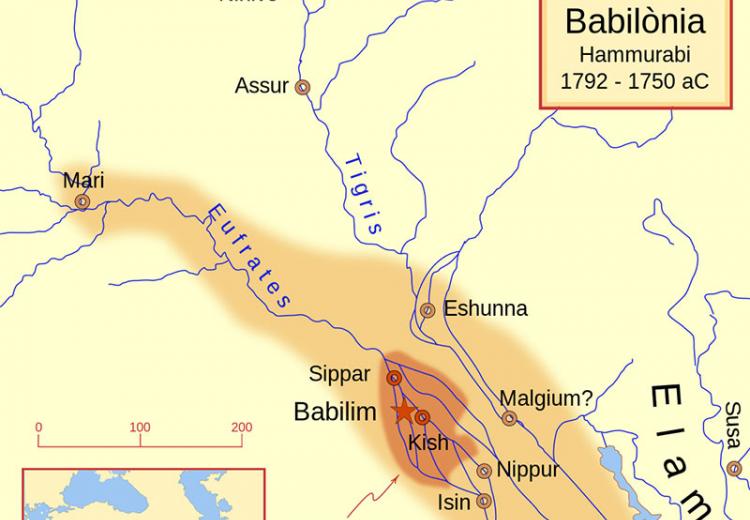Hammurabi's Code: What Does It Tell Us About Old Babylonia?

Hammurabi ruled ancient Babylonia and a good part of the Mesopotamian basin. The code of laws attributed to him is one of the earliest and most comprehensive of such law codification efforts.
King Hammurabi ruled Babylon, located along the Euphrates and Tigris Rivers, from 1792–1750 BCE. During his time as king he oversaw a great expansion of his kingdom from a city-state to an empire. However, today he is most famous for a series of judgments inscribed on a large stone stele and dubbed Hammurabi's Code. Scholars are still debating its precise significance as a set of laws, but the Code's importance as a reflection of Babylonian society is indisputable. In this lesson, students learn about life in Babylonia through the lens of Hammurabi's Code. This lesson is designed to extend world history curricula on Mesopotamia and to give students a more in-depth view of life in Babylonia during the time of Hammurabi.
Guiding Questions
What can we learn about Old Babylonian society from Hammurabi's Code?
How has Hammurabi's Code influenced subsequent codes of law?
To what extent does Hammurabi's Code still influence how we create and enforce laws?
Learning Objectives
Investigate Hammurabi's motives for creating and distributing his "Code."
Evaluate how Hammurabi's Code reflects Babylonian society at the time.
Assess the extent to which Hammurabi's Code remained relevant beyond his death.
